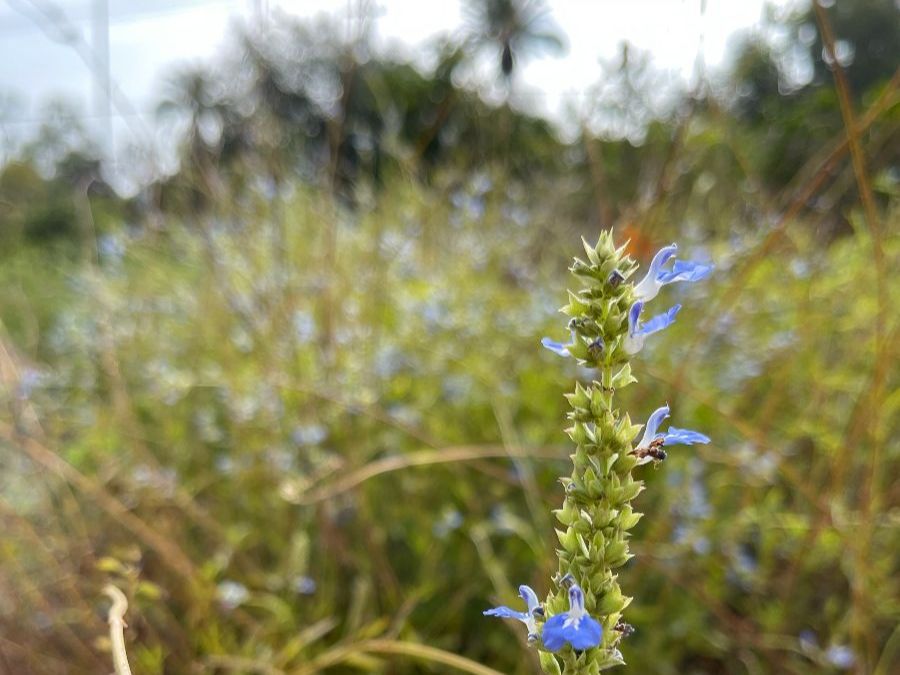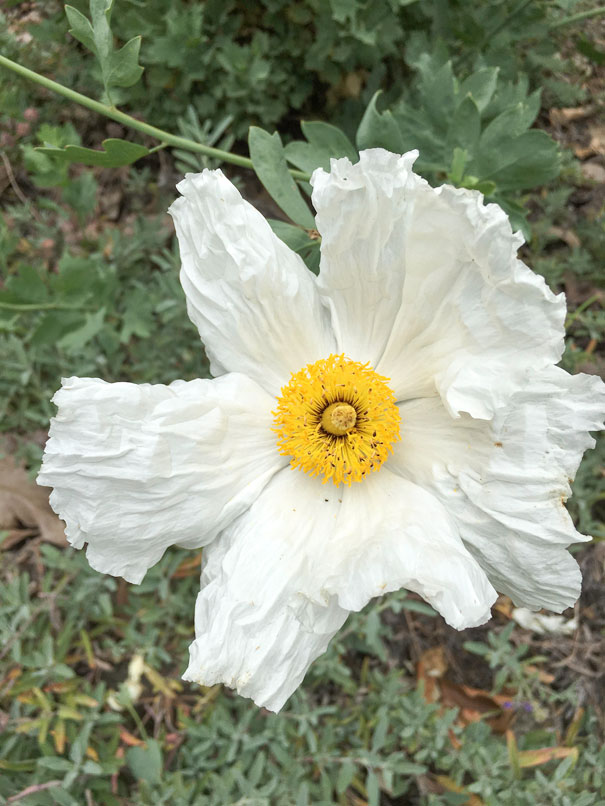Paloma Avila is Program and Development Manager at Arlington Garden Pasadena and co-host of Beyond Freeways.
According to the University of California Cooperative Extension, landscape irrigation accounts for about 50% of annual residential water consumption statewide. Since lawn irrigation makes up such a large proportion of this consumption, one simple way we can reduce residential water use quickly is by removing non-native, water-demanding lawns. In addition to the water demands of turf, lawn irrigation wastes water through run-off and introduces pesticides and chemical fertilizers into the ecosystem. Even “water-wise” technologies create harmful impacts when installed incorrectly.
Given the negative environmental impacts, why are lawns so pervasive in California?
According to Sarah B. Schindler, a law professor at the University of Denver who specializes in environmental and property law, “green yards are deeply seated in American ethos”. She argues that this is due to a few factors: existing ordinances encourage them, they impact property values of a home due to “settled expectations”, and they are the status quo. The ubiquity of non-native grass lawns could also be due to a lack of information and awareness on the part of many residents, who have often not considered the environmental impacts of “traditional” Southern California landscaping.
But the environmental impacts of lawns are becoming more difficult to ignore.
Recently, the Bureau of Reclamation has announced the first-ever water shortage for the lower Colorado River Basin. As the water from the Colorado River becomes even more depleted, water conservation measures will need to be improved. What has California done to address the fact that so much of its municipal water is used for water-demanding, non-native landscapes with little environmental benefits?
Some things have been done. During the worst drought in recent history, several California State Assembly bills were passed encouraging water conservation including AB 1668 and AB 1164. And we saw new municipal incentives and rebates to remove lawns, which were later amended to incorporate the use of native plants.
Norms are slowly changing because many have recognized that the way we are using water in Southern California is not sustainable. So why not get ahead of the curve and replace that lawn now? According to a study published by UCLA, LADWP’s lawn-replacement incentive program that began 7 years ago can be described as a success. One-third of participating houses had a neighbor who also participated, called the “neighborhood adoption effect” in the study. Think of the difference you could make by turning your ornamental lawn into a thriving ecosystem.
Current operating guidelines for the Colorado River Compact that guarantee California a certain amount of water every year (along with a handful of other states) will expire in 2026. Most likely, permanent conservation measures will be considered. While incentives have been somewhat successful in the past for turf replacement, they are not enough. We are likely to see more “command-and-control” regulations that enforce water-saving measures. Command and control is a city’s “policing power”, which many of us are used to: brush clearance, street parking restrictions, noise ordinances are all examples of policing power imposed by a city. In fact, Pasadena has an entire system to report someone’s sprinkler leak or inappropriate watering; it is not so difficult to imagine this system employed to report unnecessary lawns as well.
Native plants will need to be included more in urban planning and Master Street Tree Plans of municipalities. Pasadena Audubon Society is currently trying to change Pasadena’s outdated policy of street tree planting to include more native trees and habitat for birds. The prioritizing of trees over lawns or other kinds of “traditional” green space will help reduce the heat-island effect that occurs in cities. Replacing lawns with native trees and shrubs could help cool the area by up to 2-9℉ during the summer, according to the EPA.
It will be an uphill battle in the years ahead to encourage norm change in landscape architecture and in policies that affect people’s personal home choices. But we must fight this battle.
What you can do:
- Sign Pasadena Audubon’s letter advocating for an update to Pasadena’s street tree planting list to focus on natives.
- Remove your lawn and look up turf removal rebates and incentives.
- Avoid using leaf blowers, which decrease the health of the soil, and instead leave leaves under the tree. They will decompose and return nutrients and moisture to the soil.
- Look up what native plants grow in your zip code.
- Visit local nurseries that sell native plants such as: Artemisia, Hahamongna Nursery, Theodore Payne Foundation. Armstrong Garden Center also carries some Southern California natives.
- Visit Arlington Garden for ideas on climate-appropriate, drought-tolerant landscaping!




Recent Comments